Home>Articles>How Can Fertilizer Use Be Detrimental To The Environment
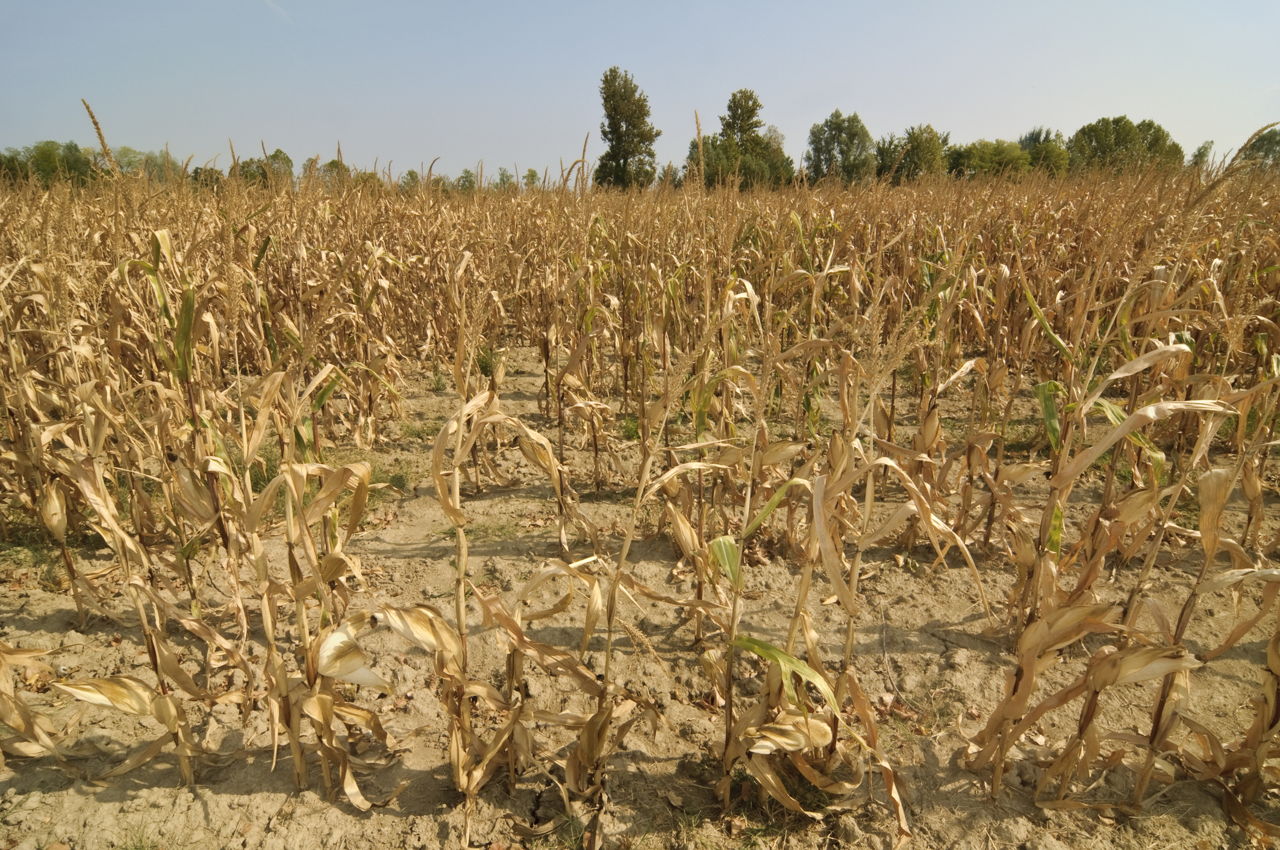

Articles
How Can Fertilizer Use Be Detrimental To The Environment
Modified: January 19, 2024
Learn about the detrimental effects of fertilizer use on the environment in these informative articles. Understand the impact and explore sustainable alternatives.
(Many of the links in this article redirect to a specific reviewed product. Your purchase of these products through affiliate links helps to generate commission for Storables.com, at no extra cost. Learn more)
Introduction
Fertilizer use plays a crucial role in modern agricultural practices, helping to increase crop yields and ensure food security. Fertilizers provide essential nutrients to plants, promoting healthy growth and higher productivity. However, the excessive and improper use of fertilizers can have detrimental effects on the environment. This article aims to explore the negative impacts of fertilizer use on the environment and discuss strategies to minimize these effects.
Fertilizers are substances that are applied to the soil or plants to provide necessary nutrients like nitrogen, phosphorus, and potassium. These nutrients are vital for the growth and development of plants, as they play a critical role in various physiological processes.
The importance of fertilizer use in agriculture cannot be overstated. With the world’s population rapidly growing, there is an increasing demand for food production. Fertilizers help to ensure that the nutritional needs of crops are met, leading to higher yields and better quality food.
However, while the use of fertilizers has numerous benefits, it also poses significant environmental challenges. The runoff of excess fertilizers into water bodies can result in water pollution, the degradation of soil quality, air pollution, loss of biodiversity, and even contribute to climate change.
It is essential to strike a balance in fertilizer use, ensuring that agricultural practices are sustainable and minimize harm to the environment. By adopting responsible fertilizer management strategies and employing innovative techniques, farmers can minimize the negative impacts of fertilizer use while still maximizing crop productivity.
This article will now delve into the specific negative impacts of fertilizer use on the environment and explore strategies to mitigate these effects. By understanding both the challenges and potential solutions, we can work towards a more sustainable and environmentally-friendly approach to agriculture.
Key Takeaways:
- Precision agriculture techniques, such as site-specific nutrient management and variable rate technology, enable farmers to apply fertilizers efficiently, minimizing environmental impact and optimizing crop production.
- Utilizing organic fertilizers promotes nutrient recycling, enhances soil health, and reduces reliance on synthetic inputs, ultimately minimizing environmental pollution and conserving resources.
Definition of Fertilizer
Fertilizers are substances or mixtures that are added to the soil or plants to provide essential nutrients necessary for plant growth and development. These nutrients typically include nitrogen (N), phosphorus (P), and potassium (K), also known as NPK, but may also include micronutrients such as calcium, magnesium, and sulfur, depending on the specific requirements of the plants being cultivated.
There are three main types of fertilizers: organic, inorganic, and synthetic. Organic fertilizers are derived from natural sources, such as compost, animal manure, and crop residues. They release nutrients slowly and improve soil structure and fertility over time.
Inorganic fertilizers, also known as mineral or chemical fertilizers, are manufactured through industrial processes. They contain nutrients in concentrated forms and provide a readily available source of nutrients to plants. Synthetic fertilizers are a type of inorganic fertilizer that is made through chemical synthesis, typically in the form of granules or powders.
The primary purpose of fertilizers is to supplement the nutrient levels present in the soil, ensuring that plants have an adequate supply of essential elements to grow and develop optimally. Nutrient deficiencies can hinder plant growth, decrease crop yields, and lead to nutrient imbalances, impacting overall plant health.
Fertilizers are typically applied to the soil before or during the planting process, but they can also be applied as foliar sprays or through fertigation, which involves injecting fertilizers directly into the irrigation system. The application method depends on various factors, such as crop type, soil conditions, and nutrient requirements.
It is important to note that while fertilizers can significantly improve crop productivity, their use must be approached with caution. Improper or excessive use of fertilizers can have adverse effects on the environment, including water pollution, soil degradation, and negative impacts on biodiversity. Therefore, it is crucial to use fertilizers responsibly and adopt sustainable farming practices to mitigate these potential risks.
Importance of Fertilizer Use
Fertilizer use plays a vital role in modern agricultural practices and is crucial for ensuring food security, increasing crop yields, and improving overall plant health. Here are some key reasons why fertilizer use is important:
- Enhanced Nutrient Availability: Fertilizers provide essential nutrients, such as nitrogen (N), phosphorus (P), and potassium (K), which are crucial for plant growth. These nutrients are necessary for various physiological processes, including photosynthesis, root development, and fruit formation. By supplying these nutrients, fertilizers help to overcome nutrient deficiencies in the soil, ensuring that plants have access to the nutrients they need to thrive.
- Increased Crop Yields: Fertilizer use has revolutionized agriculture by significantly improving crop productivity. By providing plants with the necessary nutrients, fertilizers help to optimize growth, leading to higher crop yields. This increased productivity is particularly important in meeting the demand for food in a world with a rapidly growing population.
- Improved Plant Health and Quality: Plants that receive an adequate supply of nutrients from fertilizers are healthier and more resilient to diseases, pests, and adverse environmental conditions. Fertilizer use promotes vigorous plant growth, stronger root systems, and improved nutrient uptake, resulting in healthier plants that are better equipped to withstand stressors and produce higher-quality crops.
- Efficient Nutrient Management: Fertilizer use allows farmers to precisely tailor the nutrient supply to meet the specific needs of different crops and soil conditions. It enables targeted nutrient application, ensuring that plants receive optimal amounts of nutrients while minimizing waste and nutrient loss. This efficient nutrient management enhances resource utilization and reduces the environmental impact of agriculture.
- Support for Sustainable Agriculture: Fertilizer use is an essential component of sustainable agriculture, which aims to meet the present needs of food production without compromising the ability of future generations to meet their own needs. By boosting crop yields and improving efficiency, fertilizer use helps to reduce the amount of land required for cultivation, conserves natural resources, and minimizes the conversion of natural habitats into agricultural land.
While the importance of fertilizer use in agriculture is undeniable, it is crucial to exercise responsible and sustainable practices. Overuse or misuse of fertilizers can lead to environmental degradation and have detrimental effects on ecosystems. Therefore, it is essential to adopt proper fertilizer management techniques and strategies to maximize the benefits of fertilizer use while minimizing its potential negative impacts on the environment.
Negative Impacts of Fertilizer Use on the Environment
While fertilizer use is essential for agricultural productivity, it can have significant negative impacts on the environment. Here are some of the key environmental challenges associated with fertilizer use:
- Water Pollution: One of the primary concerns associated with fertilizer use is water pollution. When fertilizers are applied to farmlands, excess nutrients can leach into water bodies or runoff into nearby rivers, lakes, and streams. High concentrations of nitrogen and phosphorus in water bodies can lead to an overgrowth of algae, causing harmful algal blooms. These blooms deplete oxygen levels in the water, leading to the death of aquatic organisms and the degradation of water quality.
- Soil Degradation: Improper and excessive use of fertilizers can contribute to soil degradation. High doses of fertilizers can affect the physical properties of the soil, reducing its ability to hold water and increasing the risk of erosion. Additionally, the continuous use of mineral fertilizers without organic amendments can lead to imbalances in the soil’s nutrient content, impacting soil health and fertility. This can result in the long-term degradation of soil quality and productivity.
- Air Pollution: Fertilizer use can contribute to air pollution through the release of nitrogen compounds into the atmosphere. When fertilizers are applied to the soil, nitrogen can be converted into ammonia gas through a process called volatilization. Ammonia emissions contribute to the formation of particulate matter and the formation of secondary pollutants, such as nitrogen oxides (NOx). These pollutants can have adverse effects on air quality and human health, leading to respiratory issues and contributing to the formation of smog and acid rain.
- Biodiversity Loss: Excessive fertilizer use can negatively impact biodiversity. Runoff of fertilizers into water bodies can lead to the loss of aquatic biodiversity, as excessive nutrients promote the growth of invasive species and can choke out native aquatic plants and animals. In addition, the use of fertilizers can alter the nutrient balance in the soil, favoring certain plant species over others and disrupting natural ecosystems. This can lead to a decrease in biodiversity, as some plants and organisms may struggle to survive in imbalanced soil conditions.
- Climate Change: Fertilizer use contributes to climate change through several mechanisms. Nitrogen fertilizers release nitrous oxide (N2O), a potent greenhouse gas, into the atmosphere. N2O has a much higher global warming potential than carbon dioxide (CO2). Additionally, the energy-intensive manufacturing and transportation processes involved in producing and distributing fertilizers contribute to greenhouse gas emissions, further exacerbating climate change.
These negative impacts highlight the importance of using fertilizers responsibly and employing environmentally-friendly practices. Minimizing fertilizer runoff, adopting precision agriculture techniques, and utilizing organic fertilizers are some strategies that can help mitigate the environmental damage caused by fertilizer use. Through responsible management and sustainable agricultural practices, we can strike a balance between increasing crop productivity and preserving the health and integrity of our environment.
Water Pollution
Water pollution is one of the primary environmental concerns associated with fertilizer use. When fertilizers are applied to agricultural fields, excess nutrients, particularly nitrogen (N) and phosphorus (P), can enter water bodies through various pathways, including runoff and leaching. This nutrient runoff poses a significant threat to water quality and ecosystems.
When excess nutrients such as nitrogen and phosphorus enter water bodies, they can trigger the excessive growth of algae, a phenomenon known as eutrophication. The excess nutrients act as fertilizers for the algae, leading to algal blooms. These blooms can have harmful effects on aquatic ecosystems, impacting the balance of the ecosystem and causing a range of environmental problems.
A high density of algae can block sunlight from penetrating the water, hindering the growth of submerged aquatic plants and adversely affecting their survival. This can lead to a decrease in oxygen levels in the water, a process known as oxygen depletion or hypoxia. Oxygen depletion can cause the death of fish and other aquatic organisms that depend on oxygen for survival.
Another consequence of algal blooms is the production of toxins by certain types of algae, such as cyanobacteria. These toxins, known as harmful algal toxins (HABs), can be detrimental to aquatic life, pose risks to human health, and damage overall ecosystem health.
Additionally, when algal blooms eventually subside, the dead algae sink to the bottom of the water bodies and undergo decomposition. During the decomposition process, bacteria consume oxygen, leading to further depletion of oxygen levels, exacerbating the problem of hypoxia.
The impact of water pollution caused by fertilizer runoff goes beyond aquatic ecosystems. When water bodies, such as lakes, rivers, and coastal areas, become polluted with excess nutrients, it affects the drinking water supply and recreational activities. High levels of nutrients in drinking water can be harmful to human health, causing issues such as gastrointestinal problems and the potential risk of toxins.
To mitigate water pollution caused by fertilizer use, various strategies can be implemented. One approach is to implement precision agriculture techniques, such as site-specific nutrient management and variable rate application, to minimize the over-application of fertilizers and ensure that nutrients are only applied where they are needed.
Additionally, establishing buffer zones along water bodies can help to trap and filter out excess nutrients before they enter waterways. These buffer zones consist of vegetation that acts as a natural filter, absorbing nutrients and preventing them from reaching water bodies.
Improved agricultural practices, such as conservation tillage and cover cropping, can also help reduce water pollution. Conservation tillage practices reduce soil erosion and minimize nutrient runoff by leaving crop residues on the soil surface, while cover cropping helps to prevent nutrient leaching by keeping the soil covered and reducing the movement of nutrients.
By implementing these strategies and adopting responsible fertilizer management practices, we can mitigate the water pollution caused by fertilizer use and protect the health and integrity of our water ecosystems.
Soil Degradation
Fertilizer use, when not managed properly, can contribute to soil degradation, negatively impacting soil health, fertility, and overall ecosystem balance. Here are some key ways in which fertilizer use can lead to soil degradation:
Nutrient Imbalance: Excessive or improper use of fertilizers can disrupt the natural nutrient balance in the soil. While fertilizers may provide essential nutrients like nitrogen (N), phosphorus (P), and potassium (K), applying them in excessive amounts can result in an imbalance. This can lead to nutrient imbalances in the soil, where certain nutrients become overly abundant, while others become deficient. Nutrient imbalances can impact plant growth and nutrient uptake, leading to reduced crop productivity and the depletion of soil fertility over time.
Soil Acidification: The use of certain fertilizers, such as ammonium-based nitrogen fertilizers, can contribute to soil acidification. These fertilizers release hydrogen ions (H+) into the soil, acidifying the soil over time. Acidic soil conditions can hinder nutrient availability and microbial activity, affecting plant growth and soil health. Acidic soils also become more susceptible to erosion and leaching of important nutrients, exacerbating soil degradation.
Erosion and Compaction: Improper fertilizer application, combined with intensive farming practices, can contribute to soil erosion and compaction. When fertilizers are applied in excessive amounts or at inappropriate times, they can be washed away by rainfall or irrigation, leading to nutrient runoff and soil erosion. Additionally, the use of heavy machinery and repetitive tillage practices can lead to soil compaction, reducing water infiltration, root penetration, and nutrient availability in the soil.
Microbial Balance: The excessive use of synthetic fertilizers can disrupt the microbial balance in the soil. Microorganisms, such as bacteria, fungi, and earthworms, play a crucial role in maintaining soil health and fertility. They help in nutrient cycling, soil structure formation, and the decomposition of organic matter. However, the overuse of chemical fertilizers can harm beneficial soil microorganisms, leading to a decrease in their population and biodiversity, deteriorating soil health and fertility.
To address soil degradation caused by fertilizer use, several strategies can be employed:
Nutrient Management Planning: Implementing nutrient management plans can help optimize fertilizer use and minimize nutrient losses. These plans involve soil testing to gather information about nutrient levels, crop nutrient requirements, and fertilizer application rates. By accurately assessing the nutrient status of the soil and tailoring fertilizer applications to meet crop needs, nutrient management planning can minimize nutrient imbalances and reduce the risk of soil degradation.
Organic Amendments: Incorporating organic amendments, such as compost, manure, and crop residues, into the soil can enhance soil fertility and structure. Organic materials release nutrients slowly and improve soil organic matter content, enhancing nutrient availability, water-holding capacity, and microbial activity. These organic amendments also help build soil resilience, reducing the risk of soil degradation and erosion.
Cover Cropping and Crop Rotation: Implementing cover cropping and crop rotation practices can help reduce soil erosion, improve soil structure, and enhance nutrient cycling. Cover crops, such as legumes and grasses, can protect the soil surface from erosion and serve as green manure, adding organic matter and nutrients to the soil. Crop rotation diversifies the plant species grown in a particular field, reducing the risk of nutrient depletion and pest infestations, and improving overall soil health.
Conservation Tillage: Conservation tillage practices, such as reduced tillage or no-till farming, help minimize soil disturbance and reduce erosion. By leaving crop residues on the soil surface, these practices protect the soil from wind and water erosion and improve soil structure. Conservation tillage also promotes the development of macroaggregates, which improve water infiltration and reduce soil compaction.
By adopting these strategies and implementing sustainable farming practices, farmers can minimize soil degradation caused by fertilizer use. It is crucial to strike a balance between fulfilling crop nutrient requirements and preserving soil health and fertility for long-term agricultural sustainability.
Air Pollution
Fertilizer use can contribute to air pollution through various mechanisms, resulting in detrimental effects on air quality and human health. Here are some key ways in which fertilizer use can lead to air pollution:
Ammonia Emissions: When nitrogen-based fertilizers, such as urea or ammonium-based fertilizers, are applied to the soil, they can undergo a process called volatilization, where a portion of the nitrogen is converted into ammonia gas (NH3). Ammonia emissions are a significant source of air pollution in agricultural regions. Ammonia can react with other air pollutants, such as sulfur dioxide and nitrogen oxides, to form particulate matter and secondary pollutants like ammonium nitrate, contributing to air pollution.
Nitrous Oxide Emissions: Nitrogen fertilizers also contribute to the release of nitrous oxide (N2O) into the atmosphere. Nitrous oxide is a potent greenhouse gas with a much higher global warming potential than carbon dioxide. The application of nitrogen fertilizers can increase soil nitrogen levels, leading to microbial processes that produce nitrous oxide. Nitrous oxide emissions from fertilizer use contribute to climate change and deplete the ozone layer.
Greenhouse Gas Emissions: The manufacturing and transportation processes involved in producing and distributing fertilizers contribute to greenhouse gas emissions. The energy-intensive production of synthetic fertilizers, particularly those derived from fossil fuels, leads to the release of carbon dioxide (CO2) and other greenhouse gases. These emissions contribute to global warming and climate change, exacerbating environmental issues.
Particulate Matter and Smog Formation: Ammonia emissions from fertilizer use can contribute to the formation of particulate matter (PM) and smog. Ammonia, when released into the atmosphere, can react with other pollutants, such as sulfur dioxide and nitrogen oxides, to form fine particles that can be harmful when inhaled. Particulate matter and smog have detrimental effects on air quality and can contribute to respiratory problems and cardiovascular issues in humans.
To mitigate air pollution caused by fertilizer use, several strategies can be implemented:
Improved Fertilizer Application: Employing precision agriculture techniques, such as site-specific nutrient management and split applications, can improve fertilizer use efficiency and reduce volatilization and nutrient losses. Applying fertilizers in the right amounts and at the appropriate times can minimize ammonia emissions and reduce the impact on air quality.
Nitrification Inhibitors: Adding nitrification inhibitors to nitrogen-based fertilizers can help slow down the conversion of ammonium to nitrate in the soil. This can reduce nitrous oxide emissions, as nitrification is one of the main processes that contribute to nitrous oxide production. Using nitrification inhibitors can help mitigate air pollution and greenhouse gas emissions associated with nitrogen fertilizer use.
Alternative Fertilizer Sources: Exploring alternative sources of nutrients, such as organic fertilizers, can help reduce emissions and pollution associated with synthetic fertilizer use. Organic fertilizers release nutrients more slowly, reducing the risk of nutrient leaching and volatilization. They also contribute to improved soil health and fertility, minimizing the need for synthetic fertilizers.
Education and Awareness: Providing educational programs and resources to farmers and agricultural professionals can raise awareness about the environmental impacts of fertilizer use. By promoting best management practices and the proper handling and application of fertilizers, it is possible to reduce air pollution and promote more sustainable agricultural practices.
By implementing these strategies and adopting responsible fertilizer management practices, we can minimize air pollution caused by fertilizer use and work towards improving air quality and mitigating the impacts of climate change.
Consider using organic or slow-release fertilizers to minimize the risk of nutrient runoff and water pollution. Additionally, follow recommended application rates and timing to prevent overuse and environmental damage.
Biodiversity Loss
The excessive use of fertilizers poses a significant threat to biodiversity, impacting ecosystems and leading to the loss of plant and animal species. Here are some key ways in which fertilizer use can contribute to biodiversity loss:
Water Pollution: When fertilizers are applied to agricultural fields, excess nutrients can enter water bodies through runoff and leaching. These excess nutrients, particularly nitrogen and phosphorus, can have detrimental effects on aquatic ecosystems. Once in water bodies, these nutrients promote the growth of algae, leading to algal blooms. The excessive growth of algae depletes oxygen levels in the water, affecting fish and other aquatic organisms. This disruption in the natural balance of the ecosystem can lead to a decline in biodiversity, as native species struggle to survive.
Altered Soil Composition: Excessive fertilizer use can alter the nutrient composition of the soil, favoring certain plant species over others. As a result, some plant species may outcompete native plants, leading to a decrease in plant diversity. This reduction in plant diversity affects the availability of food and habitat for other organisms, impacting the entire ecosystem. Additionally, the use of synthetic fertilizers can negatively impact soil microorganisms, further disrupting the delicate balance of the soil ecosystem.
Loss of Native Plants: The excessive use of fertilizers can result in changes to the plant community composition, favoring the growth of fast-growing, nutrient-demanding plant species. This can lead to the suppression or displacement of native plants in the area. Native plant species are often adapted to local climate conditions and provide food and habitat for a diverse range of wildlife. The loss of native plants can disrupt the ecological balance and negatively impact biodiversity.
Impact on Pollinators: Fertilizer use can have indirect effects on pollinators, such as bees and butterflies, which are crucial for plant reproduction and maintaining biodiversity. Excessive nitrogen levels in plants can alter floral morphology and reduce nectar production, making it less attractive to pollinators. This can affect their foraging behavior and decrease their reproductive success. The decline in pollinator populations can have far-reaching consequences for the plant species they pollinate and, consequently, the entire ecosystem.
Disruption of Natural Ecosystems: Excessive fertilizer use in agricultural areas can lead to the conversion of natural ecosystems into monoculture agricultural systems. This land-use change removes natural habitats and reduces biodiversity. Native plant and animal species that rely on these ecosystems for survival may be displaced or unable to adapt to the altered landscape. The loss of natural habitats and the associated biodiversity can have cascading effects throughout the food chain.
To mitigate the impact of fertilizer use on biodiversity loss, several strategies can be implemented:
Sustainable Agriculture Practices: Adopting sustainable agricultural practices, such as agroforestry, organic farming, and integrated pest management, can help minimize the negative impacts of fertilizer use on biodiversity. These practices focus on promoting biodiversity, preserving ecosystem services, and reducing reliance on synthetic fertilizers and pesticides.
Habitat Restoration: Restoring natural habitats and creating wildlife corridors can help support biodiversity by providing essential habitats for native plant and animal species. By promoting the reestablishment of diverse plant communities, these habitats can attract a variety of wildlife and contribute to biodiversity conservation efforts.
Buffer Zones: Establishing buffer zones around agricultural fields can help minimize the runoff of fertilizers and protect adjacent natural habitats. These buffer zones act as a barrier, filtering out excess nutrients before they reach water bodies and sensitive ecosystems.
Education and Awareness: Providing education and raising awareness among farmers, landowners, and the general public about the impacts of fertilizer use on biodiversity can encourage the adoption of sustainable agricultural practices. By promoting the importance of protecting biodiversity and highlighting the link between fertilizer use and its consequences, we can foster a collective effort to minimize biodiversity loss.
By implementing these strategies and fostering a greater appreciation for biodiversity, we can mitigate the negative impacts of fertilizer use and work towards preserving and restoring the rich and diverse ecosystems upon which we all depend.
Climate Change
Fertilizer use contributes to climate change through various mechanisms, adding to the global greenhouse gas emissions and exacerbating the challenges posed by climate change. Here are some key ways in which fertilizer use can contribute to climate change:
Nitrous Oxide Emissions: Nitrogen-based fertilizers, particularly synthetic fertilizers, contribute to the release of nitrous oxide (N2O) into the atmosphere. Nitrous oxide is a potent greenhouse gas with a significantly higher global warming potential than carbon dioxide (CO2). The application of nitrogen fertilizers can increase soil nitrogen levels, leading to microbial processes that produce nitrous oxide. Nitrous oxide emissions from fertilizer use contribute to climate change, as it traps heat in the atmosphere and contributes to the warming of the planet.
Energy Consumption and Emissions: The production, manufacturing, and transportation processes involved in producing and distributing fertilizers require significant energy inputs, often leading to greenhouse gas emissions. The extraction and processing of raw materials, such as natural gas or phosphate rock, contribute to carbon dioxide emissions. The use of fossil fuels for energy in fertilizer production adds to greenhouse gas emissions, further contributing to climate change.
Deforestation and Land Use Change: The demand for increased agricultural production often leads to deforestation and the conversion of natural land into agricultural land. This land-use change contributes to greenhouse gas emissions, as forests act as a carbon sink and their destruction releases stored carbon into the atmosphere. The removal of trees and plant cover also reduces the planet’s ability to absorb carbon dioxide, further contributing to climate change.
Loss of Carbon Sequestration: Excessive fertilizer use can impact the natural carbon sequestration potential of soils. Carbon sequestration refers to the process by which carbon dioxide is captured and stored in plant biomass and soils. When synthetic fertilizers are overused, they can stimulate plant growth and cause a rapid release of stored carbon dioxide from the soil. This release of carbon dioxide contributes to greenhouse gas emissions.
To mitigate the impact of fertilizer use on climate change, several strategies can be implemented:
Optimized Fertilizer Management: Implementing precise fertilizer application techniques and nutrient management plans can help optimize fertilizer use and reduce unnecessary nitrogen fertilizer applications. By closely matching nutrient inputs to crop requirements, farmers can minimize nitrous oxide emissions associated with excess nitrogen use.
Use of Slow-Release and Controlled-Release Fertilizers: Slow-release and controlled-release fertilizers release nutrients gradually over an extended period, reducing the potential for nutrient loss and minimizing the environmental impact. These fertilizers can enhance nutrient use efficiency and minimize greenhouse gas emissions by reducing the risk of nutrient leaching and volatilization.
Cover Cropping and Conservation Agriculture: Implementing cover cropping and conservation agriculture practices can help sequester carbon in soils. Cover crops capture carbon dioxide from the atmosphere and store it in plant biomass and soil organic matter. These practices also improve soil structure and fertility, enhancing the soil’s ability to sequester carbon and reducing the reliance on synthetic fertilizers.
Agroforestry and Tree Planting: Integrating trees into agricultural landscapes through agroforestry practices can help mitigate climate change. Trees sequester carbon dioxide through photosynthesis, reducing greenhouse gas levels. Agroforestry also improves soil fertility, conserves water, and enhances biodiversity, making agricultural systems more resilient to climate change.
Renewable Energy Sources: Transitioning to renewable energy sources, such as solar or wind power, for fertilizer production and distribution can help reduce the carbon footprint associated with the industry. Embracing clean energy alternatives helps to minimize greenhouse gas emissions and support the global effort to mitigate climate change.
By implementing these strategies and adopting sustainable agricultural practices, we can minimize the contribution of fertilizer use to climate change. Reduced greenhouse gas emissions, increased carbon sequestration, and the promotion of renewable energy sources collectively contribute to our efforts to combat climate change and create a more sustainable future.
Strategies to Minimize Environmental Detriment from Fertilizer Use
To mitigate the negative impacts of fertilizer use on the environment, it is crucial to adopt responsible fertilizer management practices and implement strategies that minimize potential harm. Here are some key strategies to minimize the environmental detriment from fertilizer use:
Precision Agriculture Techniques: Precision agriculture involves using technology and data to apply fertilizers more efficiently and precisely. By utilizing tools such as soil testing, remote sensing, and variable rate technology, farmers can determine the nutrient needs of different areas within their fields. This enables them to apply fertilizers only where and when they are needed, reducing excess fertilizer application and minimizing the risk of nutrient runoff and leaching.
Nutrient Management Planning: Developing and implementing nutrient management plans is crucial for optimizing fertilizer use and reducing environmental impacts. Nutrient management plans involve soil testing, determining crop nutrient requirements, and calculating appropriate fertilizer application rates. By accurately assessing the nutrient status of the soil, farmers can apply fertilizers in the right amounts, timing, and placement, ensuring efficient utilization by crops and minimizing losses to the environment.
Using Organic Fertilizers: Incorporating organic fertilizers, such as compost, animal manure, and plant residues, into agricultural systems can help minimize environmental detriment. Organic fertilizers release nutrients slowly, reducing the risk of nutrient runoff and leaching compared to synthetic fertilizers. They also improve soil structure, enhance nutrient retention, and promote beneficial microbial activity, contributing to overall soil health and fertility.
Cover Cropping and Crop Rotation: Implementing cover cropping and crop rotation practices can help reduce the reliance on synthetic fertilizers and minimize nutrient runoff. Cover crops, such as legumes and grasses, capture excess nutrients, preventing them from leaching into water bodies or being lost through erosion. Crop rotation diversifies plant species, enhancing nutrient cycling, reducing nutrient imbalances, and improving overall soil health. These practices also promote biodiversity, reduce pest and disease pressure, and promote efficient use of nutrients.
Optimized Irrigation Management: Proper irrigation management plays a crucial role in minimizing the environmental impact of fertilizer use. Over-irrigation can lead to nutrient leaching and runoff, carrying excess fertilizers into water bodies. By employing efficient irrigation techniques, such as drip irrigation and soil moisture monitoring, farmers can ensure that water is applied precisely where and when it is needed, minimizing nutrient losses and reducing the risk of water pollution.
Applying Buffer Zones: Establishing buffer zones around agricultural fields can act as a natural barrier, protecting water bodies from excessive nutrient runoff. Buffer zones consist of vegetation, such as grasses or trees, and help absorb and filter out excess nutrients before they reach water bodies. These buffer strips minimize the risk of water pollution and provide habitat for beneficial wildlife.
Educating Farmers and Agricultural Professionals: Providing education and awareness programs to farmers and agricultural professionals is essential to promote responsible fertilizer management practices. Training in proper fertilizer application techniques, nutrient management planning, and the environmental consequences of fertilizer use can empower farmers to make informed decisions and adopt more sustainable practices. Collaboration with agricultural extension services and organizations can help disseminate information and provide support to farmers.
By implementing these strategies, farmers can minimize the environmental detriment from fertilizer use and work towards a more sustainable and environmentally-friendly approach to agriculture. It is crucial to strike a balance between improving crop productivity and preserving the health and integrity of our ecosystems, ensuring a more sustainable and resilient future for agriculture and the environment.
Precision Agriculture Techniques
Precision agriculture techniques are innovative approaches that enable farmers to apply fertilizers more efficiently and precisely, minimizing environmental impact and optimizing crop production. These techniques utilize advanced technology, data analysis, and spatial variability to tailor fertilizer applications to the specific needs of different areas within a field. Here are some key aspects of precision agriculture techniques:
Site-Specific Nutrient Management: Site-specific nutrient management (SSNM) involves assessing the nutrient needs of different areas within a field and applying fertilizers accordingly. Through various tools such as soil testing and remote sensing, farmers can gather data on nutrient levels, soil properties, and crop requirements. This information helps determine the appropriate amount and timing of fertilizer application, ensuring that crops receive optimal nutrients while minimizing excess inputs.
Variable Rate Technology: Variable rate technology (VRT) allows farmers to apply fertilizers at different rates across a field, based on the variations in soil fertility and crop requirements. By using GPS mapping, yield monitors, and specialized equipment, farmers can precisely control the application of fertilizers. VRT enables farmers to target areas with nutrient deficiencies and adjust fertilizer rates accordingly, reducing over-application in areas that have sufficient nutrient levels.
Sensor-Based Technologies: Sensor-based technologies, such as aerial imagery and ground-based sensors, provide real-time data on crop health, nutrient status, soil moisture, and other factors. This data helps farmers make informed decisions about fertilizer application. For example, multispectral imagery can identify areas with nutrient deficiencies or excesses, allowing targeted fertilizer application to address specific crop needs and optimize nutrient utilization.
Drones and UAVs: Drones and unmanned aerial vehicles (UAVs) equipped with specialized sensors and cameras can collect high-resolution imagery of fields. This imagery can reveal spatial variability in crop growth, identify nutrient deficiencies, and assess overall field health. By analyzing drone-collected data, farmers can make informed decisions about fertilizer application, targeting specific areas that require additional nutrients or adjusting fertilizer rates based on crop vigor and health.
Precision Irrigation: Precision agriculture techniques also extend to irrigation management, which can significantly influence nutrient availability and minimize environmental impact. By utilizing soil moisture sensors, weather data, and evapotranspiration models, farmers can determine precise irrigation needs and deliver water precisely where and when it is needed. Proper irrigation management helps avoid over-irrigation, which can lead to nutrient leaching, and ensures efficient water use, reducing the potential for runoff and conserving water resources.
Precision agriculture techniques offer numerous benefits for both farmers and the environment. By applying fertilizers more precisely, farmers can optimize crop yields, improve nutrient use efficiency, and reduce input costs. Simultaneously, these techniques help minimize the risk of nutrient runoff, reduce environmental pollution, and conserve resources. Precision agriculture can also contribute to sustainable farming practices, such as minimizing soil erosion and preserving biodiversity by ensuring that inputs are targeted only where necessary and avoiding over-application.
Implementing precision agriculture techniques does require the adoption of technology and specialized equipment, as well as the analysis and interpretation of data. However, as technology continues to advance and become more accessible, these techniques are increasingly within reach of farmers around the world. Collaboration between farmers, agricultural experts, and technology providers can facilitate the adoption and adaptation of precision agriculture techniques to different agricultural systems and environments.
By harnessing the power of precision agriculture techniques, farmers can optimize fertilizer use, reduce environmental impact, and enhance agricultural sustainability. These approaches contribute to more efficient resource utilization, improved crop productivity, and a more sustainable and resilient future for agriculture.
Nutrient Management Planning
Nutrient management planning is a systematic approach that helps farmers optimize fertilizer use, reduce environmental impact, and ensure the efficient utilization of nutrients by crops. It involves assessing soil fertility, crop nutrient requirements, and nutrient sources, and developing a plan to match nutrient inputs with crop needs. Here are the key aspects of nutrient management planning:
Soil Testing: Soil testing is a fundamental component of nutrient management planning. By analyzing soil samples, farmers can determine the nutrient content, pH levels, and other soil properties. This information provides insights into nutrient deficiencies, imbalances, or excesses, helping farmers make informed decisions regarding fertilizer application. Soil testing also helps identify areas within a field with varying nutrient levels, enabling site-specific nutrient management.
Crop Nutrient Requirements: Understanding the nutrient requirements of different crops at various growth stages is essential for nutrient management planning. Each crop has specific nutrient needs for optimal growth and development. By considering factors such as crop type, yield goals, and nutrient uptake patterns, farmers can calculate the appropriate amounts of nutrients required throughout the growing season. This ensures that nutrients are supplied when the crop needs them the most, reducing the risk of nutrient losses to the environment.
Fertilizer Application Rates and Timing: Based on soil test results and crop nutrient requirements, nutrient management planning helps determine the proper application rates and timing of fertilizer. By aligning fertilizer application with crop uptake patterns, farmers can minimize nutrient losses through leaching or runoff. Nutrient management planning also considers factors such as the release rates of different fertilizer products, the influence of soil properties on nutrient availability, and the interaction between nutrients, ensuring that nutrient applications are optimized for effective utilization by crops.
Managing Nutrient Sources: Nutrient management planning involves not only synthetic fertilizers but also other nutrient sources, such as organic amendments (e.g., manures, compost). By effectively managing organic nutrient sources, farmers can enhance nutrient cycling, improve soil organic matter content, and minimize nutrient losses. Nutrient management plans consider both the quantity and quality of available organic nutrient sources, guiding their application in a balanced and sustainable manner.
Environmental Considerations: Nutrient management planning takes into account the potential environmental risks associated with fertilizer use. It helps identify sensitive areas, such as water bodies or areas prone to erosion, and recommends specific strategies to protect these areas from nutrient runoff. Nutrient management plans also aim to minimize the risk of nutrient pollution, taking into consideration local environmental regulations and guidelines to ensure compliance and environmental stewardship.
Monitoring and Evaluation: Regular monitoring and evaluation are essential for nutrient management planning. By assessing crop performance, monitoring nutrient levels in the soil, and tracking environmental indicators, farmers can make adjustments to their nutrient management plans if necessary. Monitoring also helps identify trends, understand the impact of management practices, and identify opportunities for improvement in nutrient use efficiency and environmental protection.
Nutrient management planning is a proactive and science-based approach that helps farmers optimize fertilizer use, improve crop productivity, and reduce environmental impacts. By matching nutrient inputs to crop needs, farmers can minimize the risk of nutrient losses to the environment, promote more sustainable agriculture, and protect water quality. Nutrient management planning also contributes to efficient resource utilization, cost savings, and improved profitability for farmers.
Collaboration with agricultural experts, extension services, and relevant organizations is crucial for the successful implementation of nutrient management planning. Through training, education, and support, farmers can gain the knowledge and skills needed to develop and implement effective nutrient management plans tailored to their specific farming systems and local conditions.
By adopting nutrient management planning, farmers can be responsible stewards of the land, contribute to environmental sustainability, and ensure the long-term viability of agricultural systems.
Using Organic Fertilizers
Utilizing organic fertilizers is an effective strategy to minimize the environmental impact of fertilizer use while promoting sustainable agriculture. Organic fertilizers are derived from natural sources such as compost, animal manure, plant residues, and bio-based byproducts. They contribute to soil fertility, promote nutrient cycling, and minimize the risk of environmental pollution. Here are the key benefits and considerations when using organic fertilizers:
Slow-Release Nutrients: Organic fertilizers release nutrients slowly over time, providing a more gradual and sustained nutrient supply to plants. This slow-release nature minimizes the risk of nutrient leaching and runoff, reducing the potential for water pollution. As organic fertilizers decompose, they release nutrients in a manner that aligns with plant uptake, improving nutrient use efficiency and reducing waste.
Improved Soil Health: Organic fertilizers enhance soil health by increasing the organic matter content and improving soil structure. They contribute to the growth of beneficial soil organisms, such as earthworms and microorganisms, which play a vital role in nutrient cycling and maintaining soil fertility. Organic fertilizers also enhance the soil’s water-holding capacity, aeration, and nutrient retention, promoting overall soil health and resilience.
Reduced Synthetic Inputs: Using organic fertilizers reduces reliance on synthetic fertilizers, minimizing the environmental impact associated with their production and use. Synthetic fertilizers are typically manufactured using energy-intensive processes that contribute to greenhouse gas emissions. By opting for organic fertilizers, farmers can decrease their carbon footprint, conserve non-renewable resources, and promote a more sustainable agricultural system.
Nutrient Recycling: Organic fertilizers are often derived from recycled organic materials such as crop residues, livestock manure, and food waste. By utilizing these organic materials as fertilizers, nutrient recycling occurs, reducing the need for external nutrient inputs. This helps close nutrient cycles, minimizing nutrient imbalances and reducing the risk of nutrient pollution in nearby water bodies.
Enhanced Biodiversity: Using organic fertilizers can contribute to biodiversity conservation. Organic farming practices, which often incorporate organic fertilizers, promote habitat diversity, including the preservation of hedgerows, flowering plants, and natural vegetation. These practices support beneficial insects, pollinators, and microorganisms, which play a crucial role in pollination, pest control, and overall ecosystem health.
Considerations: While organic fertilizers offer numerous benefits, there are some considerations to keep in mind. Organic fertilizers may have lower nutrient concentrations compared to synthetic fertilizers. Therefore, careful nutrient management and application rates should be practiced to ensure that crop nutrient requirements are satisfied. Timing and availability of nutrients may also differ since organic fertilizers require microbial activity for decomposition and nutrient release. It is important to consider the nutrient release rates of different organic fertilizers and match them with crop requirements for optimal results.
Additionally, using organic fertilizers may require a longer-term approach to see significant impacts on soil fertility and nutrient availability. Regular soil testing and monitoring are crucial to ensure that nutrient needs are met and potential nutrient deficiencies are addressed promptly.
The adoption of organic fertilizers can improve the environmental sustainability and resilience of agricultural systems. By integrating organic fertilizers into nutrient management plans and organic farming practices, farmers can enhance soil health, protect water quality, reduce greenhouse gas emissions, and support biodiversity conservation. Education, training, and knowledge sharing among farmers, extension services, and agricultural organizations play a vital role in promoting the effective use of organic fertilizers and their integration into sustainable agricultural systems.
Conclusion
The use of fertilizers in agriculture is vital for increasing crop yields and ensuring global food security. However, it is crucial to recognize and address the potential detrimental effects of fertilizer use on the environment. Through responsible fertilizer management practices and the implementation of various strategies, we can minimize these negative impacts and work towards a more sustainable and environmentally-friendly approach to agriculture.
Fertilizer use can lead to water pollution, soil degradation, air pollution, biodiversity loss, and climate change. Excess nutrients from fertilizers entering water bodies can cause algal blooms, oxygen depletion, and harm aquatic ecosystems. Improper use of fertilizers can alter soil composition, reduce fertility, and contribute to erosion and compaction. Fertilizer use also contributes to air pollution, with the release of ammonia, nitrous oxide, and greenhouse gases. Additionally, the loss of biodiversity and the disruption of natural ecosystems are consequences of excessive fertilizer application. Lastly, the energy-intensive production and transportation of fertilizers contribute to climate change and global warming.
To mitigate these environmental detriments, precision agriculture techniques, such as site-specific nutrient management and variable rate technology, enable farmers to apply fertilizers more efficiently and precisely. Nutrient management planning helps optimize fertilizer use by considering soil fertility, crop nutrient requirements, and environmental considerations. Utilizing organic fertilizers promotes nutrient recycling, enhances soil health, and reduces reliance on synthetic inputs, ultimately minimizing environmental pollution and conserving resources.
It is crucial for farmers, agricultural professionals, and policymakers to promote and adopt these strategies. Investing in education and training programs to raise awareness of responsible fertilizer management practices is essential. Collaboration between farmers, agricultural experts, extension services, and technology providers is vital in facilitating the adoption of these strategies and the integration of sustainable practices into agricultural systems.
By implementing precision agriculture techniques, nutrient management planning, and utilizing organic fertilizers, we can strike a balance between increasing crop productivity and minimizing the environmental impact of fertilizer use. With these efforts, we can protect water quality, preserve soil health and biodiversity, reduce greenhouse gas emissions, and contribute to a more sustainable and resilient agricultural future.
Frequently Asked Questions about How Can Fertilizer Use Be Detrimental To The Environment
Was this page helpful?
At Storables.com, we guarantee accurate and reliable information. Our content, validated by Expert Board Contributors, is crafted following stringent Editorial Policies. We're committed to providing you with well-researched, expert-backed insights for all your informational needs.
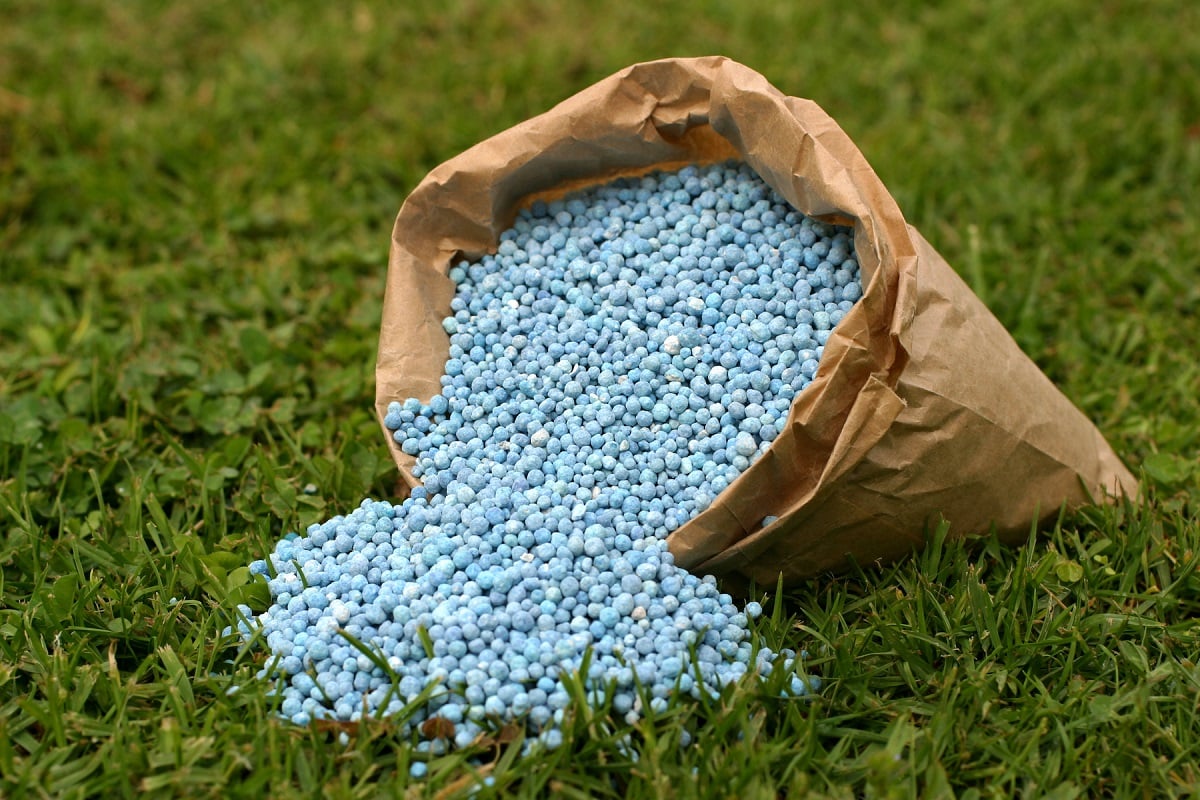
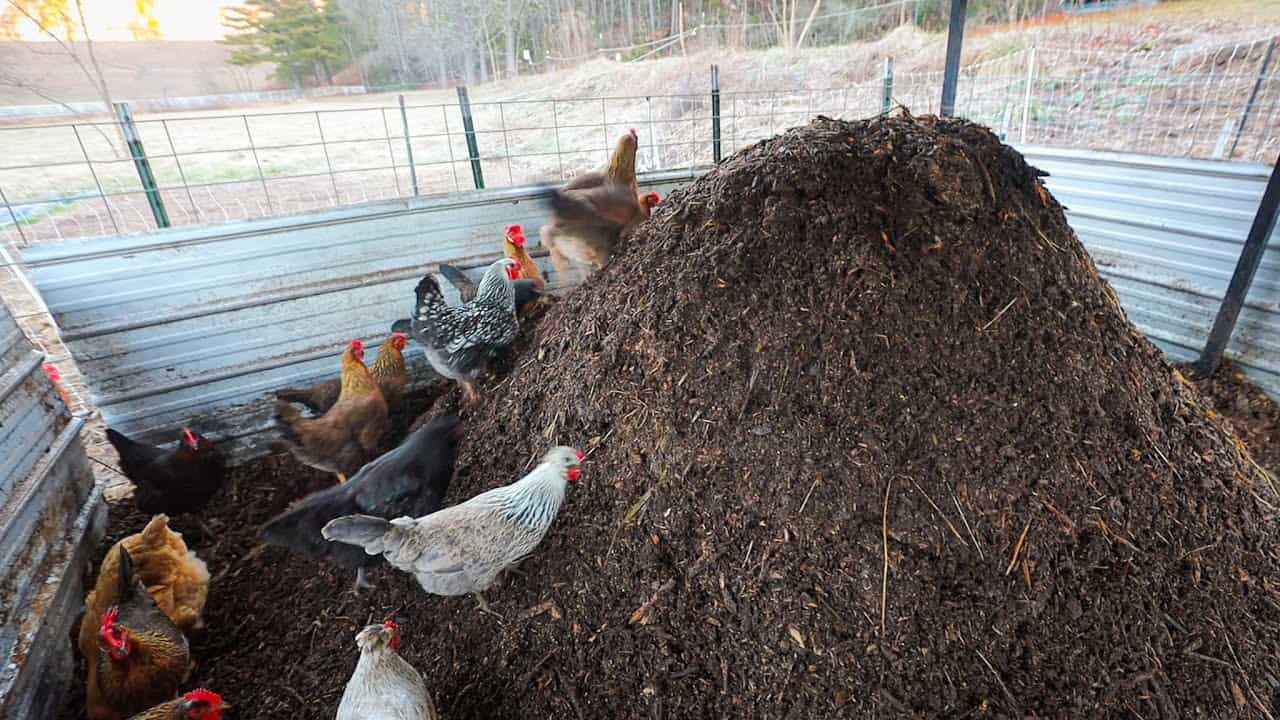

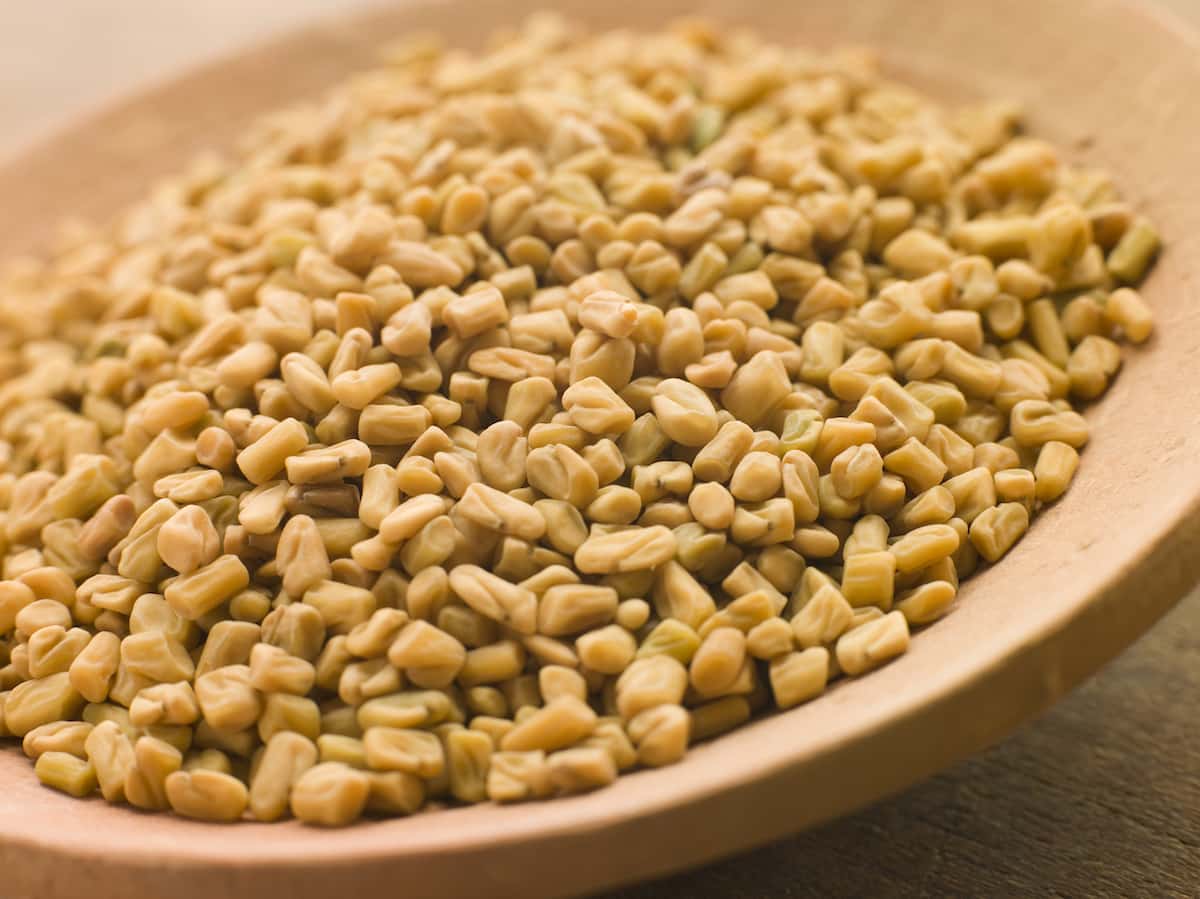

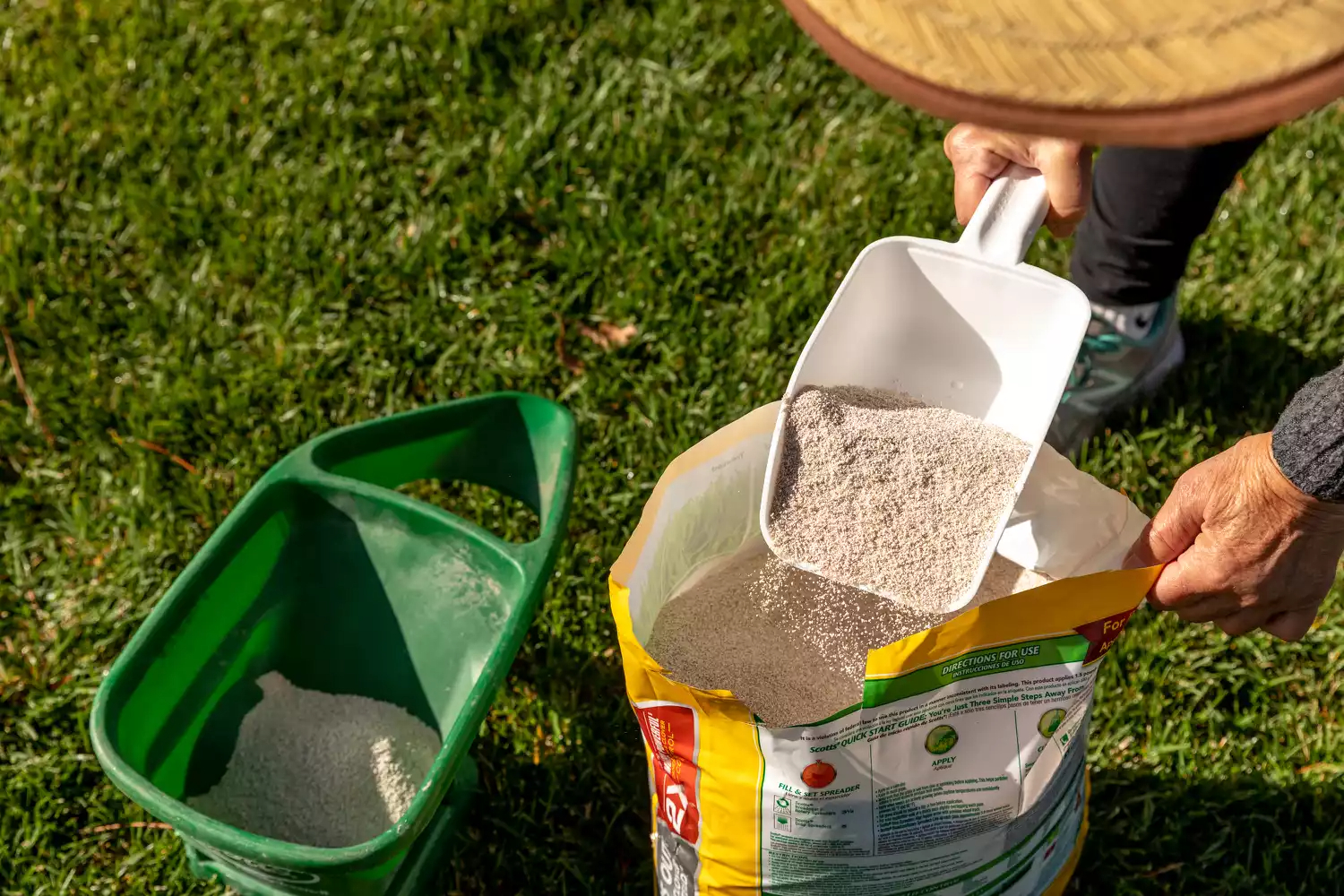
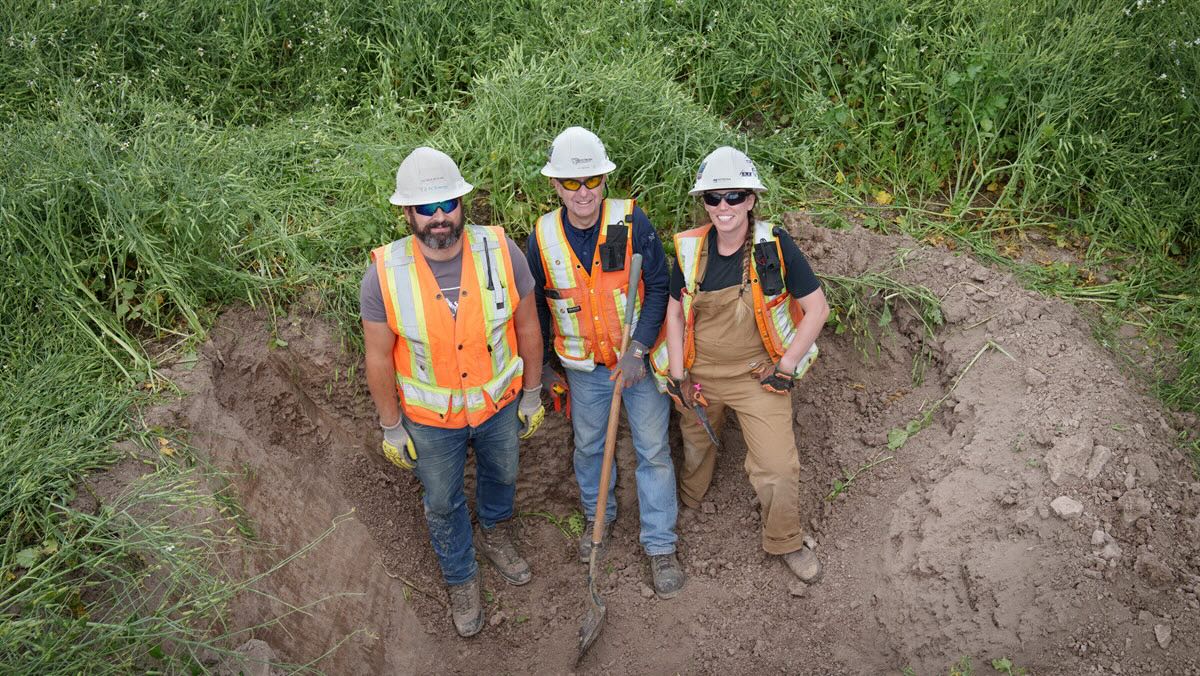


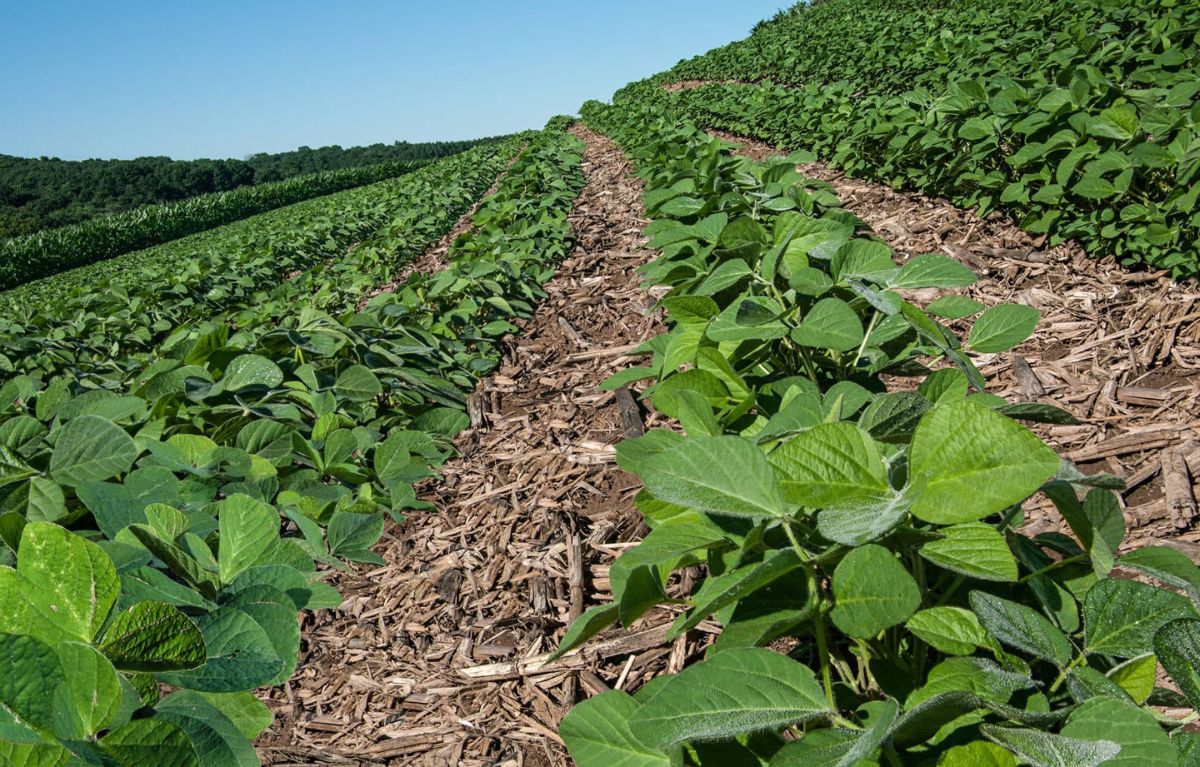

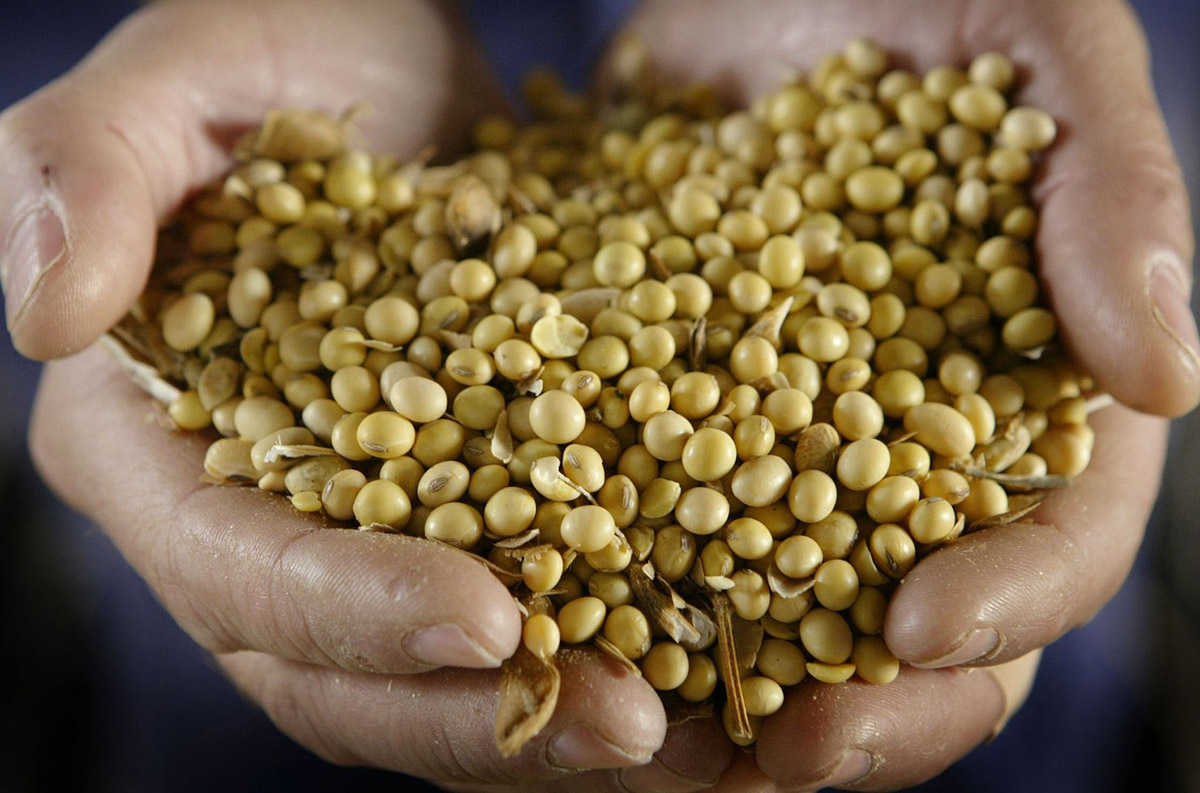

0 thoughts on “How Can Fertilizer Use Be Detrimental To The Environment”